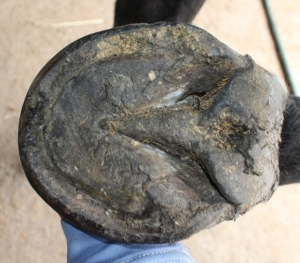Here is a link to the time line of events concerning the horse Akeem Foldager and internationally acclaimed Danish rider, Andreas Helgstrand.
I’ve got a few things to say about this whole debacle. First, what a debacle! As in what an utter ludicrous failure to get it right. Now, before going further on my rant I want to be perfectly clear on some points. I can’t read (or speak) Danish (or any other related dialect, tongue or language), so I can only rely on the translations and interpretations by others who can. I also want to acknowledge that the media often gets it wrong, slants it, twists it, whatever it takes to get the views, the clicks, the attention. Still…
From the article:
20 April 2014
Andreas Helgstrand releases a statement admitting that it was ”completely unacceptable” for Akeem Foldager’s tongue to turn blue. He blames the bridle, which he says must have been incorrectly adjusted. He says he has contacted the bit manufacturer to find a more suitable bit.
Is Mr. Helgstrand the Cole Trickle of Dressage? ‘They told me to get on the horse and ride, and I could ride.’ *shrugs shoulders and frowns* ‘But I don’t know anything about how horses or horse tack works.’ I’m nobody in the horse world scheme of things, and yet one of the first things I learned from my mentor thirty years ago was to check the tack BEFORE you work the horse. Is there any excuse for a rider of this level to ever get on a horse without doing a quick once over? Does he also put his foot in the stirrup before checking the girth? Fine, let’s say his groom/stablehand/equine caregiver is Lou Ferrigno, who gives 110% every time, and it was an act of God (or the Devil) that the bridle became incorrectly adjusted just this one time (because surely the horse has been ridden in this bit and bridle prior to this clinic!?). Why, oh why, do we suddenly contact the bit manufacturer for a more suitable bit!?
11 May 2014
Following claims that Andreas Helgstrand was being unfairly treated because of a photo representing a single moment in time…
Let’s talk ‘a moment in time’: Yep, a photo is a snapshot of what’s happening in that exact moment. However, it also tells you what happened before AND after that select moment. For instance, a horse that is hollow, over bent and behind the vertical, mouth gaping and tongue blue was doing the same thing just before and just after the picture was taken. Could have been more so, or less so, but certainly was not exhibiting something contrary to the photo.
And the rest of quote from 11 May 2014:
…50 photographs as they came to Epona.tv from the anonymous photographer (Epona.tv is aware of the identity of this person) are made available via a Dropbox link for anyone who wants to download and examine them more closely.
FIFTY photos (and a NINE minute video) of this horse is more than fifty moments in time, but is at least one hundred and fifty moments in time, and thus a pattern is made. No longer a ‘rare’ bad moment, but a whole bucket full of bad moments in a single ride by an international rider AND coached at the time by Olympic rider and international Dressage trainer Morten Thomsen. Go look at the fifty photos. The horse is very obviously behind the vertical in every single photo. The horse is very obviously gaping its mouth in every single photo. Plus being heavy on the forehand and hollow in most shots. A moment in time? **** ** ***!
Thanks to Lisa for sending this story along and making my day, not. 🙂















